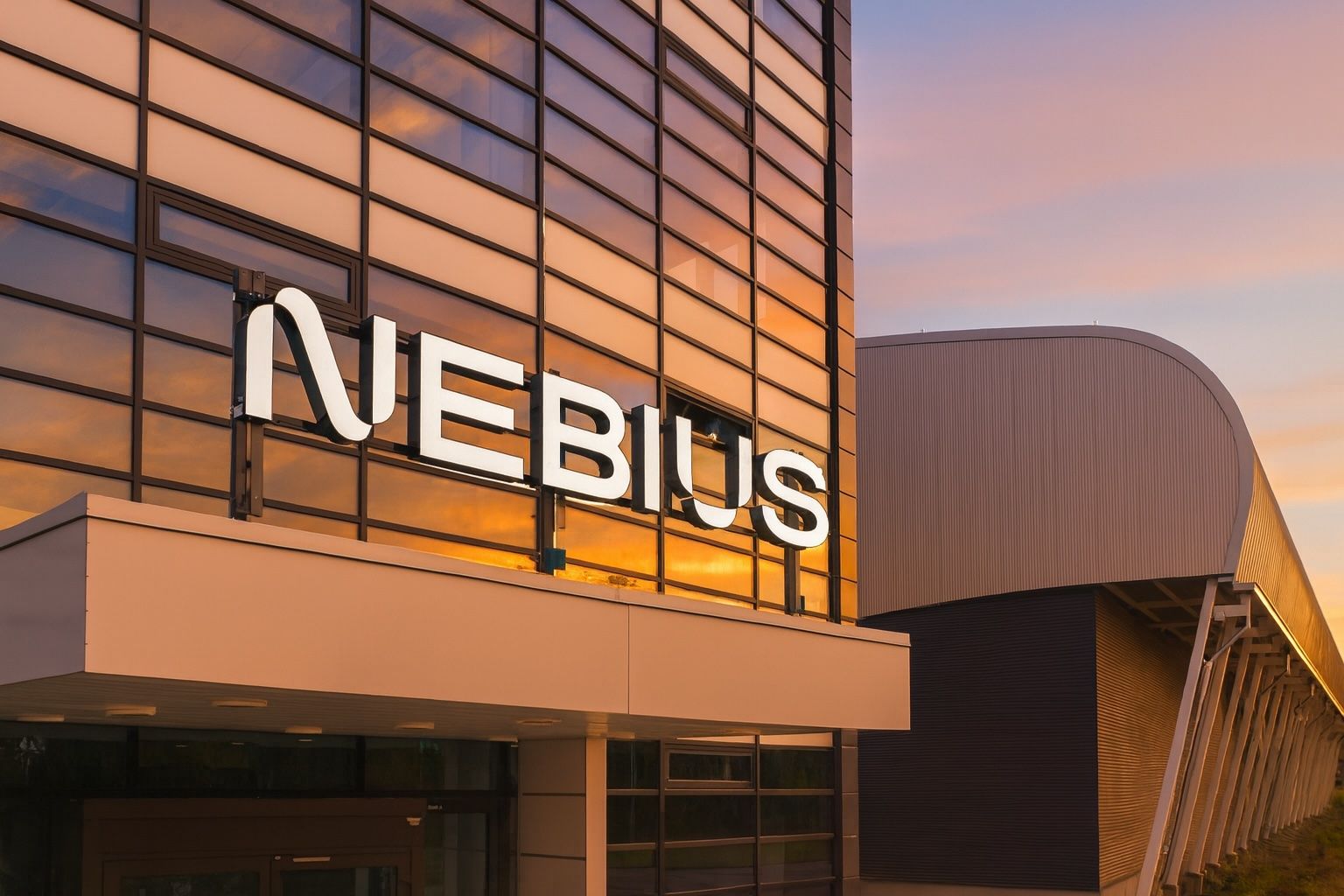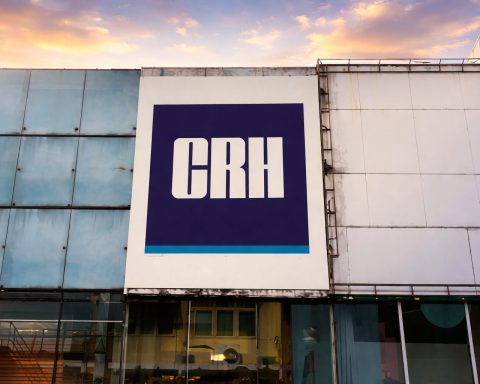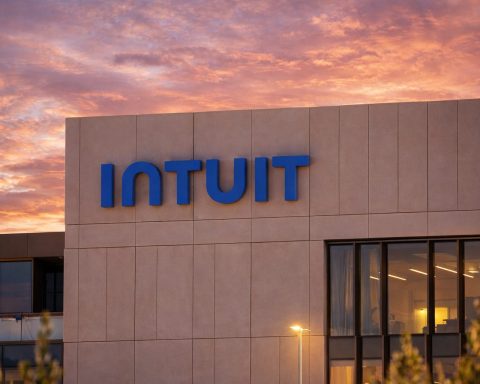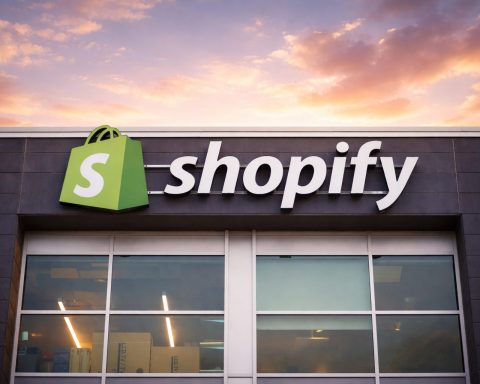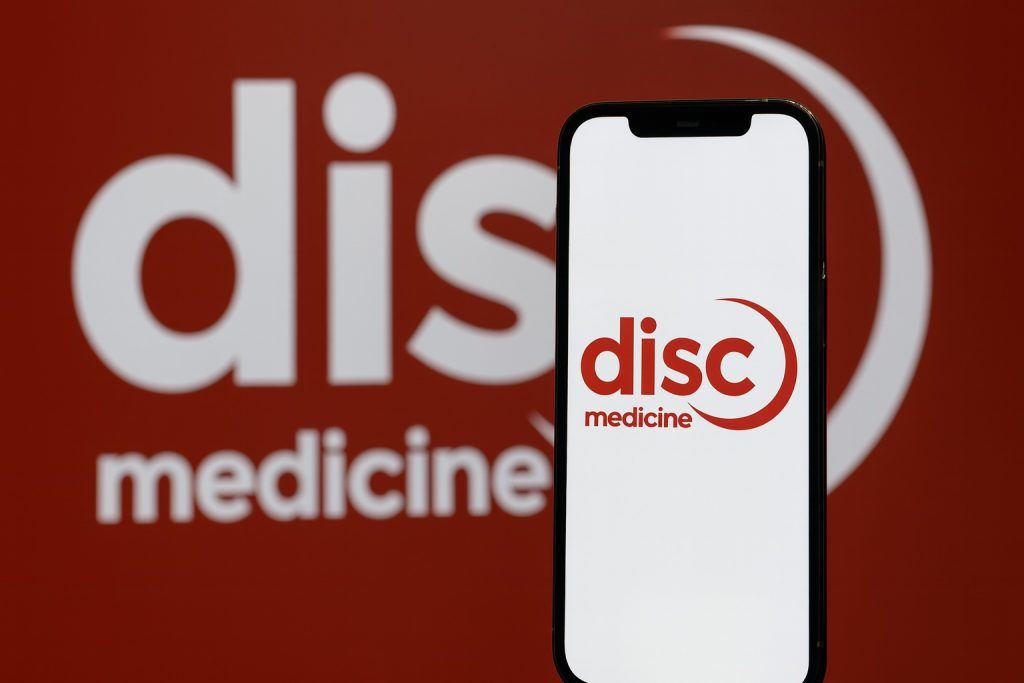- 2025’s Big AI Winner: Nebius Group N.V. (NASDAQ: NBIS) has surged over +350% year-to-date, rocketing from about $14 last autumn to recent highs around $130+ [1]. Its 52-week range spans $14.09 to $141.10 [2], reflecting explosive gains fueled by the AI cloud boom.
- Microsoft Mega-Deal: In September, Nebius inked a 5-year, $17.4 billion AI infrastructure deal with Microsoft, triggering a one-day +44% jump in NBIS stock to record levels [3]. The contract (expandable to ~$19.4B) gives Microsoft access to Nebius’s GPU cloud clusters, underscoring surging demand for AI data center capacity [4] [5].
- Stock Cools Off Today: As of Oct 17, 2025, NBIS traded around $114, down about 7% on the day [6]. Volume spiked to ~9.5 million shares (vs ~0.35M average) amid profit-taking [7]. Investors appear to be “unloading positions” after pricing in the Microsoft deal’s glow [8] [9], awaiting fresh catalysts.
- Expansion & Fundraising: Riding the Microsoft win, Nebius announced a $3 billion growth plan – issuing $2B in convertible notes + $1B in new equity [10] – to scale its AI cloud capacity. Proceeds will fund new GPU superclusters and data centers, expanding Nebius’s power capacity from ~190 MW to 1 GW by 2026 [11]. In fact, Nebius just raised $1.15B via notes plus an extra $150M from a share sale last month [12] [13], and may tap more financing to accelerate growth.
- Analysts Upbeat but Cautious: Wall Street is largely bullish on Nebius’s prospects. Goldman Sachs hiked its price target from $120 to $137 (Buy) after the Microsoft deal [14]. BWS Financial likewise lifted its target to $130, calling Nebius “significantly de-risked” by the Azure partnership [15]. The consensus rating is “Buy” (mean 2.17/5) [16]. However, some urge caution: the average analyst target (~$91) actually sits below the current price, reflecting valuation concerns [17]. Weiss Ratings just reaffirmed Nebius at Hold (“C”) [18], and Zacks notes the stock’s sharp rise has left “stretched” valuations and thin margins [19].
- AI Cloud Traction: Nebius is rapidly scaling in a red-hot AI infrastructure market. Q2 2025 revenue jumped +625% YoY to $105.1 M as AI firms raced to secure GPU capacity [20]. While still net-negative earnings (EPS –$0.38), Nebius expects to hit $900M–$1.1B annual recurring revenue by end of 2025 (up from prior $700M–$1B guidance) [21] and aims for positive EBITDA in 2026 [22]. Its cloud platform already serves big-name clients like Cloudflare, Prosus, and Shopify, notching credibility in delivering AI compute at scale [23] [24]. The blockbuster Microsoft deal cements Nebius as an alternative to the big cloud players – and management hints “more [deals] to come” as it pitches capacity to other tech giants [25].
Nebius Stock’s Wild 2025 Ride – From $14 to $130+ 🚀
Nebius Group’s logo on display – the AI cloud upstart has seen its stock skyrocket in 2025 amid major deals.
Few stocks captured the AI frenzy of 2025 like Nebius Group. This Amsterdam-headquartered cloud upstart – born from the breakup of Russia’s Yandex – has seen its Nasdaq-listed shares soar by triple digits. Year-to-date, NBIS has climbed roughly +350%, far outpacing broader tech indices [26]. The stock hit an all-time high around $132-$135 in early October, a stunning jump from just ~$14 a year ago [27]. As one analysis noted, Nebius’ high volatility (beta ~3.5) reflects both the massive upside and risks in its growth story [28].
What’s driving this meteoric rise? In large part, Nebius has ridden the wave of surging demand for AI infrastructure – the data centers, GPU servers and cloud platforms needed to train and run AI models. The stock’s defining catalyst came last month when Nebius struck gold with Microsoft. On Sept 8, the company announced a $17.4 billion deal to provide GPU capacity to Microsoft’s Azure cloud over five years [29]. Investors responded with euphoria: Nebius shares jumped ~44% in one day to record highs, and by Sept 9 the stock was up 245% for the year [30]. The deal – one of the largest AI cloud contracts ever – instantly validated Nebius’s technology on the global stage, sending a signal that this little-known firm could compete with the likes of CoreWeave and other “neo-cloud” players in supplying critical AI horsepower [31] [32].
In the weeks since, Nebius kept climbing as AI hype in the market intensified. By Oct 3, NBIS touched an intraday high near $133 [33] amid frenzied trading volumes (over 21 million shares traded that day, ~50% above average [34]). The stock has consistently traded above its 50- and 100-day moving averages, a sign of a strong bullish trend [35]. It also vastly outperformed its sector – Nebius gained ~49% in just the past month (to Oct 14), versus ~1% for the Nasdaq tech index [36]. Clearly, Nebius became a momentum darling as traders piled into AI-exposed names.
Oct 17 Stock Update: Rally Pauses as Investors Take Profits
After its blistering run, Nebius hit some turbulence this week. On October 17, NBIS shares pulled back sharply, falling about 7% intraday to the low-$114 range [37]. This comes after a few days of modest declines – the stock also dropped ~5% on Oct 14 [38] – suggesting that some early investors are ringing the cash register. Indeed, Wednesday’s 5% dip made Nebius “one of the worst performers” that day [39] as enthusiasm cooled following the big Microsoft news. By Friday the 17th, selling pressure picked up steam.
Notably, trading volume exploded during the pullback. Nearly 9.5 million NBIS shares traded on Oct 17 [40], almost 27 times the typical daily volume (~0.35M). Such heavy turnover implies that institutional investors or insiders may be taking profits or reallocating. It’s not uncommon for high-fliers like Nebius to see a bout of profit-taking after a huge run-up – especially once the initial “deal euphoria” fades. As Insider Monkey observed, “investors unloaded positions while in wait-and-see mode for more catalysts” beyond the Microsoft deal [41]. In other words, the $18B contract buzz was fully priced in, and without new news this week, some holders cashed out.
Despite the dip, Nebius stock remains up roughly 4X from its 2023 IPO and far above where it traded pre-Microsoft deal. Even after sliding to ~$114, NBIS is still near the upper end of its 52-week range ($14.09 – $141.10) [42], underscoring how dramatic the past year’s climb has been. The recent retreat may actually prove healthy, cooling off what some saw as overheated sentiment. “The glow fades” on big news eventually [43], but bulls argue Nebius’s long-term story is intact (more on that below).
Market watchers also note that Nebius isn’t alone – other AI infrastructure stocks have similarly pulled back in October. For instance, CoreWeave (CRWV) and Oracle saw volatility amid chatter about slim margins in AI cloud deals [44] [45]. A report this month suggested Oracle was losing money on cutting-edge Nvidia GPUs despite massive cloud contracts [46], raising questions about profitability for newer “AI cloud” firms. This may have spooked some Nebius investors too, given Nebius’s aggressive expansion and yet-unproven margins. Bottom line: after an eye-popping rally, NBIS is catching its breath, and traders are debating if this dip is a speed bump or a trend change.
Microsoft Pact & AI Gold Rush – Nebius’s Big Catalyst
The single development that transformed Nebius from obscure spin-off to market star was its blockbuster Microsoft partnership. Announced on Sept 8, the deal will see Nebius provide GPU infrastructure to Microsoft over 2025–2030 in exchange for $17.4 billion in payments [47]. Microsoft can even purchase additional capacity, potentially upping the total value to ~$19.4B [48]. For context, Nebius’s entire market cap is around $30 billion at current prices [49] [50] – so this contract is enormous relative to the company’s size.
Why did Microsoft choose Nebius? In a word, the AI boom. With OpenAI, Meta, Google and others racing to train advanced AI models, demand for high-performance GPUs and cloud capacity has exploded [51] [52]. Microsoft, facing its own GPU shortages, sought external help to scale Azure’s AI computing. Nebius, which operates GPU superclusters and AI-focused cloud services, fit the bill as an independent provider. Analysts note this deal validates Nebius’s tech cred: “Microsoft outsourcing hefty GPU workloads to Nebius – a role previously dominated by players like CoreWeave – underscores Nebius as a credible alternative to the big hyperscalers” [53]. It’s essentially Nebius’s graduation moment in the eyes of enterprise customers.
According to Reuters, Nebius will deliver capacity from a new U.S. data center in Vineland, New Jersey as part of the Microsoft pact [54]. The deal’s economics also appear favorable. Nebius CEO Arkady Volozh (who famously co-founded Yandex) said the “economics…are attractive” and – more importantly – that partnering with Microsoft will “help [Nebius] accelerate its AI cloud business growth in 2026 and beyond” [55]. In other words, beyond the immediate revenue, Nebius expects this blue-chip endorsement to win it even more big clients down the road.
The Microsoft news came back-to-back with another milestone: Nebius’s announcement it would raise $3 billion to expand capacity [56]. Just two days after the deal (Sept 10), Nebius unveiled a plan to issue $2B in convertible notes and $1B in new stock [57]. Goldman Sachs, Morgan Stanley and others underwrote the offerings [58]. This war chest is earmarked for rapid scale-up – Nebius said it will buy more Nvidia hardware, secure new data center sites, and boost power capacity roughly 5× to 1 gigawatt by 2026 [59]. In essence, Nebius is racing to meet the huge demand surge (not least, Microsoft’s needs). As Reuters reported, on Sept 9 the stock soared ~49% to a record high on the Microsoft deal and plans, and was up 245% for the year at that point [60] – a remarkable turnaround for a company that only a year ago was carving itself out of Yandex’s assets [61].
Yet these ambitions come with challenges. Scaling data centers and GPUs is capital-intensive, and Nebius will be burning cash to deliver on contracts. The company acknowledges it may pursue “other financing options to enable significantly faster growth” than initially planned [62] [63]. That could mean further debt or share issuances in the future – something for investors to monitor, as it can dilute equity. So far, Nebius has navigated funding well (its recent note issuance was even oversubscribed), but executing such a massive build-out in a short time is a tall order.
Business Performance – Hyper Growth, Heavy Investment
Nebius’s latest financial results show a company growing at ludicrous speed, albeit from a small base. In Q2 2025, Nebius reported $105.1 million in revenue – up 625% year-on-year [64] and more than double its Q1 revenue [65] [66]. This surge was driven by “AI cloud infrastructure revenues [that] grew more than nine times” vs a year ago [67]. The main catalyst: booming demand for GPU compute from generative AI and machine learning startups. Nebius says its GPU clusters were at near-peak utilization in Q2 thanks to customers training large language models and other AI workloads [68].
Critically, Nebius revealed in its last earnings call that its core AI cloud segment even turned EBITDA-positive ahead of schedule [69]. However, due to heavy investments, the company overall is still losing money (net loss per share was –$0.38 in Q2, slightly better than expected) [70]. Nebius’s gross margins are currently thin given the massive depreciation of expensive hardware and data center operating costs. This is common for “AI cloud” upstarts: they must spend big on capacity first, then reap profits later once economies of scale kick in.
The company remains confident in its trajectory. It recently raised its 2025 year-end ARR (annual recurring revenue) guidance to $900M–$1.1B (from $700M–$1B) [71], signaling that new customer wins and deployments are ramping faster than thought. Nebius also reaffirmed plans to hit $1 billion+ in annual revenue by 2026 and to become EBITDA-positive that year [72]. Essentially, management expects an almost exponential growth curve over the next 6–12 months as its expanded GPU fleet comes online – a bet on insatiable AI demand.
It’s worth noting that Nebius isn’t starting from zero on the customer front. Beyond Microsoft, Nebius has landed multiple high-profile clients for its AI cloud services. These include Cloudflare (which uses Nebius for AI tasks), Prosus (the global tech investor), Shopify, and even some AI startups that view Nebius as a go-to provider [73] [74]. Such early traction with reputable firms lends credibility to Nebius’s platform. By meeting the rigorous requirements of these customers, Nebius demonstrates it can handle enterprise-grade AI workloads at scale. This strengthens the bull case: if Nebius can satisfy Microsoft’s and others’ needs, it could ride the broader AI investment cycle for years to come.
That said, competition is heating up in the third-party AI infrastructure space. Players like CoreWeave, Lambda Labs, and cloud giants (AWS, Google) are all in the mix. Nebius’s differentiator is being a pure-play independent with cutting-edge GPU clusters and (arguably) a head start in Europe and emerging markets, thanks to its Yandex roots. But to maintain its growth, Nebius will need to keep innovating (on software, networking, etc.), manage supply chains for scarce AI chips, and likely expand geographically. The company has hinted at building a global footprint, with capacity in the US (New Jersey), Europe, and the Middle East underway [75]. If executed well, Nebius could become a key infrastructure backbone for the AI era – essentially an arms dealer in the AI gold rush.
What Do the Experts Say? – Quotes from Analysts & Investors
Financial experts have taken notice of Nebius’s dramatic entrance and have been busy updating their models. Here’s a snapshot of recent commentary:
- Goldman Sachs (Buy, $137 PT): On Oct 9, Goldman’s analyst Alexander Duval boosted his price target on NBIS from $120 to $137, reiterating a Buy rating [76]. The hike came after Nebius’s deal announcements, with Goldman apparently seeing a stronger revenue outlook. Goldman’s target implies the stock could reclaim and exceed recent highs.
- BWS Financial (Buy, $130 PT): Boutique firm BWS raised its target from $90 to $130 post-Microsoft deal, arguing that Nebius is now “significantly de-risked” with a major Tier-1 customer on board [77]. In BWS’s view, the partnership reduces uncertainty around Nebius’s tech and revenue pipeline. However, they caution that dilution risks remain as Nebius may issue more equity to fund growth [78].
- DA Davidson (Neutral, $75 PT): Not all are fully convinced – DA Davidson reportedly maintained a more conservative $75 target [79] (set prior to the latest news). This target is well below current prices, suggesting Davidson sees the stock as ahead of fundamentals. Some analysts in this camp worry about valuation – with Nebius at ~130× forward sales and 100+ P/E (on tiny earnings) [80], the stock is pricing in years of growth already.
- Zacks Investment Research (Hold rating): In an Oct 14 report titled “Nebius Stock Surges 49% – Should You Hold or Offload?”, Zacks lauded Nebius’s rapid progress but urged caution on the “stretched” valuation and execution risks [81] [82]. Zacks notes Nebius is still in “aggressive expansion mode” with heavy capex and thin margins, so any slip in execution could hurt. They suggest new investors consider the high price carefully, while existing shareholders might continue holding if they believe in the long-term story [83]. Zacks currently ranks NBIS a #3 (Hold).
- Weiss Ratings (Hold): Independent ratings firm Weiss recently reaffirmed Nebius’s grade as “C” (Hold) [84]. This indicates a middling risk/reward balance. Weiss acknowledged Nebius’s strong momentum but also its speculative nature. They often highlight factors like share dilution, debt load, and market volatility in such growth names – all relevant for Nebius.
- Motley Fool: Several Motley Fool contributors have written about Nebius, with mixed takes. One Fool analyst dubbed Nebius a “once-in-a-lifetime opportunity” given its role in AI infrastructure, noting the company’s 28% stake in an AI startup and Volozh’s visionary leadership [85]. However, another article asked if Nebius’s run might be an “AI bubble,” advising readers to gauge if the company can execute at scale without overspending [86]. Such commentary reflects the broader split in sentiment: excitement about Nebius’s TAM (total addressable market) vs. concern about valuation and competition.
All told, the consensus leans bullish – 6 analysts tracked by Reuters give Nebius a Buy-leaning average rating (2.17/5) [87]. But even bulls often temper their optimism with risk reminders. As one market strategist quipped, “Investors are rewarding growth big-time, but margins will be an important reality check” in AI cloud stocks [88]. Nebius will eventually need to convert its dizzying revenue growth into robust profits to justify a multi-billion valuation – a point not lost on the more value-conscious experts.
Technical View – Momentum vs. Volatility
From a technical analysis perspective, Nebius’s chart has been on a strong uptrend, albeit a volatile one. The stock’s ability to hold above key moving averages during its climb signaled bullish momentum – through mid-October, NBIS traded comfortably above its 50-day and 100-day averages [89], indicating sustained upward bias. Even after this week’s dip, those trend lines are likely still sloping upward given the earlier surge. Relative strength index (RSI) levels had moved into overbought territory during the peak, so the recent pullback helped cool off any extreme sentiment.
One standout feature is Nebius’s trading volume spikes on news. On major rally days (e.g. Oct 3 and Oct 9), volume exploded to tens of millions of shares [90] [91], showing high engagement from traders. Conversely, any low-volume retreats might suggest profit-taking by a few versus broad selling. However, Oct 17’s drop came with volume ~27× the norm [92], a possible sign of a short-term selloff climax. Chartists will be watching if $112–$115 (Friday’s lows) act as a support zone – that area roughly coincides with Nebius’s late-September consolidation before the final leg higher. Below that, the next psychological support might be around $100.
Nebius’s beta (~3.5) implies it’s 3–4× more volatile than the market [93], not surprising for a young tech stock. This means sharp swings (both up and down) are to be expected. Options traders have noticed NBIS’s volatility: call option volumes spiked in recent weeks, and implied volatility on Nebius options is quite elevated (a sign the market is pricing in big moves). Long-term investors in Nebius likely need a strong stomach for volatility and a multi-year horizon to ride out the bumps.
In terms of market sentiment, Nebius has attracted a fervent following on retail forums and social media, given its ties to hot themes (AI, cloud, even geopolitics via the Yandex angle). Some retail investors see Nebius as a chance to invest in “the AI infrastructure boom” without buying mega-caps like Nvidia or Microsoft. This enthusiasm can be a double-edged sword – it provides ample liquidity and support during rallies, but could exacerbate selloffs if sentiment flips. So far, Nebius’s story – an underdog startup signing mega-deals – has been compelling fuel for the bulls.
Outlook – Can Nebius Keep Growing Into Its Valuation?
Looking ahead, the key question is whether Nebius can live up to the hype (and lofty valuation) by executing on its aggressive expansion. In the short term (next 1–3 months), analysts say to watch for a few things:
- Q3 Earnings Release: Nebius will report its Q3 2025 results likely in November. Investors will scrutinize revenue growth (did it accelerate further from Q2’s +625%?) and any updated guidance. They’ll also want to hear about backlog and pipeline – e.g., has Nebius signed other enterprise customers besides Microsoft? Even hints of new deals could boost sentiment.
- Progress on Expansion: Updates on the Vineland, NJ data center buildout and other capacity additions will be crucial. Any delays or cost overruns could worry the market, given how integral these expansions are for delivering the Microsoft contract on time.
- Macro/Market Conditions: Nebius, like other high-beta tech stocks, could be buffeted by broader market moves. Rising interest rates, rotations out of tech, or any cooling of the “AI trade” might weigh on NBIS in the near term. Conversely, continued enthusiasm for AI plays (or a major tech rally) would likely lift Nebius alongside peers.
In the mid-term (6–12 months), Nebius’s trajectory will hinge on fundamentals catching up to valuation. By this time next year, the company will need to show that it can convert the Microsoft deal and other wins into substantial revenue – potentially a quarterly run-rate of $200M+ by late 2026 if hitting that $1B ARR goal [94]. It will also need to demonstrate a path to profitability. Gross margins should improve as newer NVIDIA Hopper H200 and Blackwell GPUs (which Nebius is deploying in its clusters) become fully utilized [95]. These advanced chips offer better performance per dollar, which could eventually help margins. Additionally, Nebius’s partnership with Nvidia might afford it some pricing or supply advantages for GPUs [96], another factor to watch.
Strategic partnerships could further shape Nebius’s outlook. The Microsoft deal was likely just step one. If Nebius can secure one or two more large customers (think: another cloud provider, a government contract, or a consortium of AI startups), it would reinforce its growth prospects. Its chief rival, CoreWeave, has been actively partnering (e.g., with Nvidia itself). Nebius hinted that discussions are ongoing with other major tech firms for AI infrastructure needs [97]. Any announcement on that front would be a bullish catalyst.
Investors should also monitor the competitive landscape and regulatory backdrop. Nebius’s origin – splitting from Yandex after Russia’s Ukraine invasion – means it has no operations in Russia now, focusing instead on global markets [98]. But geopolitics can still intrude (e.g., U.S. export controls on chips, or EU regulations on cloud providers). So far Nebius appears to navigate this fine, but as it grows, it could draw more scrutiny.
Bottom line: Nebius Group has quickly become one of 2025’s stock market darlings, with a story straight out of Silicon Valley lore – visionary founder, cutting-edge tech, and a meteoric stock chart. The near-term sentiment remains positive albeit cautious: many see Nebius as a leader of the AI infrastructure trend, yet acknowledge the stock isn’t cheap and the road to sustained profits is challenging. As one Reuters piece framed it, Nebius is part of a cohort of firms “channeling billions into AI infrastructure as demand booms” [99] [100] – and that booming demand gives it a huge opportunity if it can execute.
For now, Nebius’s trajectory looks promising. The company itself is optimistic, and its CEO Arkady Volozh – who once built “Russia’s Google” – is “starting over” in the West with grand ambitions [101]. He’s betting Nebius can become a foundational player in the AI era. Investors have placed their bets as well, driving NBIS up 350% this year. Whether the stock’s next 350% move is up or down will depend on how well Nebius turns today’s hype into tomorrow’s tangible results. As of mid-October, the AI narrative around Nebius is strong; now it’s about delivery and scale. In the words of one Seeking Alpha analyst, Nebius’s rise is exciting but “hype-driven,” and the company must back it up by conquering the “rapid expansion and valuation” challenges ahead [102]. The coming quarters will be pivotal in proving whether Nebius is truly the real deal in AI cloud – or simply a shooting star that burned too hot.
Sources: Nebius press and SEC filings; Reuters; ts2.tech (TechStock²) [103] [104]; Insider Monkey via Yahoo Finance [105] [106]; Bloomberg; Nasdaq/Zacks [107] [108]; Reuters market data [109] [110]; MarketBeat; etc.
References
1. ts2.tech, 2. www.reuters.com, 3. ts2.tech, 4. www.reuters.com, 5. ts2.tech, 6. www.reuters.com, 7. www.reuters.com, 8. www.insidermonkey.com, 9. www.insidermonkey.com, 10. www.reuters.com, 11. ts2.tech, 12. www.insidermonkey.com, 13. finviz.com, 14. www.insidermonkey.com, 15. ts2.tech, 16. www.reuters.com, 17. ts2.tech, 18. www.marketbeat.com, 19. www.nasdaq.com, 20. ts2.tech, 21. www.nasdaq.com, 22. ts2.tech, 23. www.nasdaq.com, 24. ts2.tech, 25. ts2.tech, 26. ts2.tech, 27. ts2.tech, 28. ts2.tech, 29. www.reuters.com, 30. www.reuters.com, 31. www.reuters.com, 32. ts2.tech, 33. ts2.tech, 34. ts2.tech, 35. www.nasdaq.com, 36. www.nasdaq.com, 37. www.reuters.com, 38. www.insidermonkey.com, 39. www.insidermonkey.com, 40. www.reuters.com, 41. www.insidermonkey.com, 42. www.reuters.com, 43. www.insidermonkey.com, 44. www.marketbeat.com, 45. www.marketbeat.com, 46. www.marketbeat.com, 47. www.reuters.com, 48. www.nasdaq.com, 49. www.reuters.com, 50. www.reuters.com, 51. www.reuters.com, 52. www.reuters.com, 53. ts2.tech, 54. www.insidermonkey.com, 55. www.insidermonkey.com, 56. www.reuters.com, 57. www.reuters.com, 58. www.reuters.com, 59. ts2.tech, 60. www.reuters.com, 61. www.reuters.com, 62. finviz.com, 63. finviz.com, 64. ts2.tech, 65. www.nasdaq.com, 66. www.nasdaq.com, 67. www.nasdaq.com, 68. www.nasdaq.com, 69. www.nasdaq.com, 70. ts2.tech, 71. www.nasdaq.com, 72. ts2.tech, 73. www.nasdaq.com, 74. www.nasdaq.com, 75. www.nasdaq.com, 76. www.insidermonkey.com, 77. ts2.tech, 78. ts2.tech, 79. ts2.tech, 80. www.reuters.com, 81. www.nasdaq.com, 82. www.nasdaq.com, 83. www.nasdaq.com, 84. www.marketbeat.com, 85. finviz.com, 86. www.aol.com, 87. www.reuters.com, 88. www.marketbeat.com, 89. www.nasdaq.com, 90. ts2.tech, 91. finviz.com, 92. www.reuters.com, 93. ts2.tech, 94. www.nasdaq.com, 95. www.nasdaq.com, 96. www.nasdaq.com, 97. ts2.tech, 98. ts2.tech, 99. www.reuters.com, 100. www.reuters.com, 101. www.bloomberg.com, 102. seekingalpha.com, 103. ts2.tech, 104. ts2.tech, 105. www.insidermonkey.com, 106. www.insidermonkey.com, 107. www.nasdaq.com, 108. www.nasdaq.com, 109. www.reuters.com, 110. www.reuters.com
